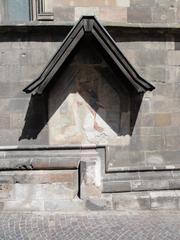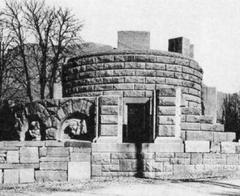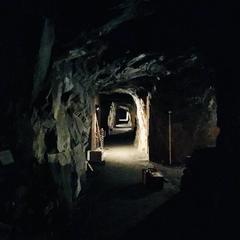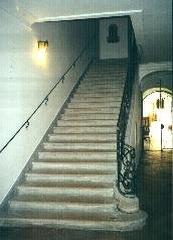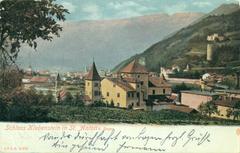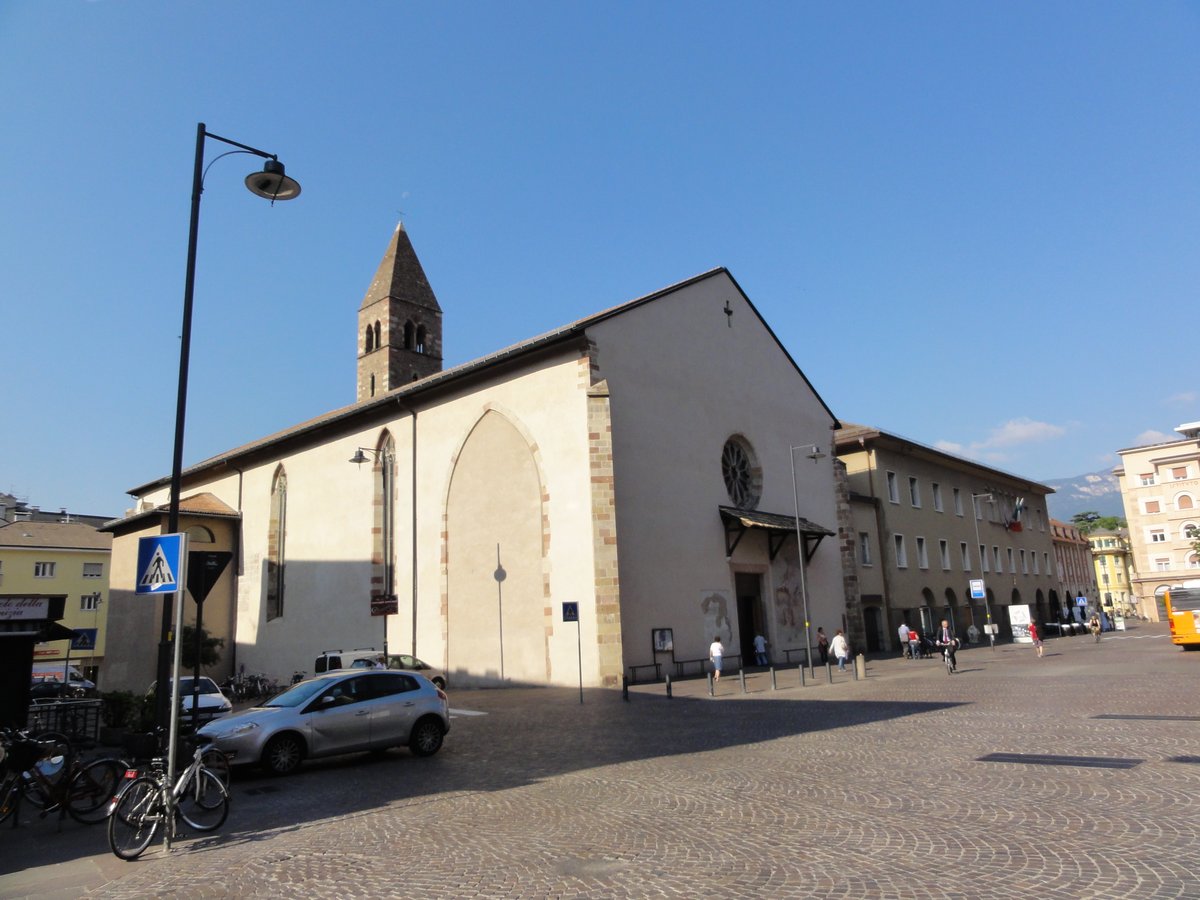
Dominican Church Bolzano: Visiting Hours, Tickets, and Historical Significance
Date: 04/07/2025
Introduction
Nestled in the heart of Bolzano, Italy, the Dominican Church (Chiesa dei Domenicani) is a remarkable testament to Gothic architecture, artistic innovation, and South Tyrol’s rich cultural heritage. Founded in the 13th century, it stands as one of the region’s earliest Gothic monuments, renowned for its medieval frescoes, serene cloisters, and continuous role as a spiritual and cultural center. This comprehensive guide provides essential information for visitors—including current visiting hours, ticketing policies, accessibility features, and highlights—while exploring the church’s enduring historical and artistic significance.
Official resources like the Bolzano Tourism website and the Südtiroler Landesmuseum offer further details and updates for planning your visit.
Table of Contents
- Historical Overview
- Architectural and Artistic Highlights
- Visitor Information
- Location and Nearby Attractions
- Cultural Significance
- Tips for Visiting
- FAQ
- References
Historical Overview
Medieval Foundations and Early Construction
The Dominican Church was established shortly after the Dominican Order arrived in Bolzano in 1272. Construction began that same year, with consecration following in 1275. Built just outside the medieval city walls, the church’s early Gothic design—marked by its pointed arches and ribbed vaults—embodied the Dominicans’ spiritual devotion and commitment to community engagement (Bolzano Tourism).
Architectural Evolution and Artistic Flourishing
As Bolzano prospered in the 14th and 15th centuries, the church expanded with additional chapels and a monastic complex. The 17th and 18th centuries brought Baroque enhancements, including ornate stuccoes and a high altar featuring a renowned 1655 painting by Guercino. Despite these additions, the church retains its original Gothic simplicity, particularly in the nave and cloister. The site is especially celebrated for its fresco cycles, notably the Giotto-inspired works in the Chapel of St. John, and for later contributions by artists such as Friedrich Pacher (Südtiroler Landesmuseum).
Civic and Religious Role
Historically, the Dominican Church served as a center for preaching, community gatherings, and cultural events, reflecting the complex social fabric of medieval Bolzano. Its strategic location on Piazza Domenicani, near Walther Square and the city’s cathedral, underscored its importance in both religious and civic life (Alto Adige Cultura).
Architectural and Artistic Highlights
Gothic and Baroque Features
The church’s single-nave design, pointed arches, and ribbed vaults are hallmarks of early Tyrolean Gothic architecture. Baroque renovations introduced intricate stucco capitals and a marble high altar. The façade’s late Gothic rose window and medieval frescoes, such as the Death of Mary by Leonhard von Brixen and the monumental Saint Christopher, are must-see features. The transition from Gothic to Baroque is also evident in the church’s stained glass, restored after WWII with contemporary designs (Bolzano Official Site).
The Cloister and Chapels
The Cloister
Dating to the 14th century, the cloister features arcaded walkways and fresco fragments depicting saints and biblical scenes. The peaceful garden and harmonious proportions make it a favorite for reflection and photography.
The Chapel of St. John
This side chapel is the artistic jewel of the church, showcasing a cycle of 14th-century frescoes attributed to Giotto’s school. The vibrant scenes illustrate the life of St. John the Baptist and the Passion of Christ, offering rare insight into medieval devotional art (Südtiroler Landesmuseum).
The Chapel of St. Catherine
Accessible from the cloister, this chapel contains additional Giotto-inspired frescoes and richly decorated iconography from the same period.
Visitor Information
Visiting Hours and Tickets
- Church: Open Tuesday to Sunday, 9:00 AM – 5:00 PM (closed Mondays and holidays).
- Cloister: Generally open during church hours; limited access in winter.
- Admission: Free; donations appreciated.
- Guided Tours: Available by reservation, particularly for the Chapel of St. John. Booking recommended through the Bolzano Tourism Office.
Accessibility
- The main entrance is wheelchair accessible with ramps.
- Some areas of the cloister and chapels have steps or uneven surfaces; visitors with reduced mobility should contact the visitor center in advance for assistance (Bolzano Tourism).
Guided Tours and Special Events
- Guided Tours: Offered seasonally and during special events. Self-guided visits are supported by interpretive panels and brochures.
- Events: The church hosts concerts, exhibitions, and religious festivals throughout the year. Notably, the Ferruccio Busoni International Piano Competition takes place here, attracting global audiences.
Photography Guidelines
- Photography is permitted without flash.
- Professional equipment and tripods require prior permission.
Location and Nearby Attractions
- Address: Piazza Domenicani, 39100 Bolzano BZ, Italy
- Getting There: A 10-minute walk from Bolzano’s main railway station; well-served by local buses.
- Nearby Sites: Walther Square, Bolzano Cathedral, South Tyrol Museum of Archaeology (Ötzi the Iceman), Museion (Museum of Modern and Contemporary Art), and historic shopping arcades.
Cultural Significance
The Dominican Church is a living symbol of Bolzano’s spiritual, artistic, and communal evolution. Its integration with the Claudio Monteverdi Conservatory and the Bolzano Art Gallery (Stadtgalerie) fosters ongoing artistic and educational activities. The church’s presence on Piazza Domenicani, adjacent to major urban and academic institutions, reinforces its role as a bridge between Bolzano’s medieval roots and its contemporary cultural vibrance (weinstrasse.com).
Tips for Visiting
- Plan Ahead: Always verify current opening hours and event schedules on the official tourism website.
- Combine Sites: Pair your visit with other Bolzano highlights like the Cathedral or the Archaeological Museum.
- Attend Events: Experience the church’s acoustics and ambiance by attending a concert or service.
- Dress Appropriately: Modest attire is recommended; maintain a respectful demeanor.
- Photography: Use only non-flash photography to help preserve the artwork.
FAQ
Q: Are there entrance fees?
A: No, admission is free. Donations are welcome.
Q: What are the Dominican Church Bolzano visiting hours?
A: Tuesday to Sunday, 9:00 AM – 5:00 PM; closed Mondays and holidays.
Q: Is the church accessible for visitors with disabilities?
A: The main church is wheelchair accessible; some areas of the cloister have steps.
Q: Are guided tours available?
A: Yes, seasonally and by reservation, especially for the Chapel of St. John.
Q: Can I take photographs?
A: Yes, without flash. Professional equipment requires permission.
References
- Visiting the Dominican Church in Bolzano: History, Tickets, and Travel Tips, 2025, Bolzano Tourism (Bolzano Tourism)
- Visiting the Dominican Church in Bolzano: Hours, Tickets, History, and Highlights, 2025, Südtiroler Landesmuseum (Südtiroler Landesmuseum)
- Visiting the Dominican Church in Bolzano: Hours, Tickets & Historical Highlights, 2025, Weinstrasse Tourism (weinstrasse.com)
- Visiting the Dominican Church in Bolzano: Hours, Tickets, History & Travel Tips, 2025, Bolzano Official Tourism (Bolzano Official Tourism)
Final Recommendations
The Dominican Church in Bolzano is a multifaceted gem that encapsulates South Tyrol’s spiritual, artistic, and community evolution. Its Gothic roots, Baroque embellishments, and ongoing restoration invite visitors to journey through centuries of religious artistry and civic life. The central location, free entry, and proximity to other historic landmarks make it an essential destination. Enhance your visit with guided tours or by attending one of the church’s many cultural events.
For up-to-date information, always consult the Bolzano Tourism website and the Südtiroler Landesmuseum.





